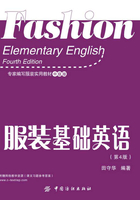
Grammar The Adjective and the Adverb 形容词和副词
一、形容词
它是用来修饰名词或不定代词,表示人或事物的性质、特征或状态,其用法如下:
1.作定语。例如:
1)China is a socialist country.
2)I have something important to tell you.
2.作表语。例如:
1)The room is big and clean.
2)The polluted river is getting cleaner and cleaner.
3.作宾语补足语。例如:
1)We must keep our classroom clean and tidy.
2)The found the test very difficult.
4.“定冠词the+形容词”表示这一类人或物,相当于名词的作用,在句中可作主语或宾语。例如:
1)The young should love and respect the old.
年轻人应当爱戴和尊敬老年人。
2)The new will replace the old.
新的东西将替代旧的东西。
二、形容词的比较等级
大多数形容词有三个等级,即原级、比较级和最高级。形容词的原级即形容词的原形,其比较级和最高级的变化,分规则变化和不规则变化两种。
1.规则变化:
1)单音节词和少数双音节词,加词尾-er,-est来构成比较级和最高级。

2)其他双音节词和多音节词,在前面加more,most来构成比较级和最高级。

2.不规则变化:

三、副词
修饰动词、形容词、其他副词或全句。副词的比较级和形容词的比较等级完全相同。
1.副词的比较等级举例:

2.副词的种类。副词分三类:即普通副词、疑问副词和关系副词。其中普通副词又可以分下列五种:
1)时间副词:now,then,soon,already,always,often,immediately,early,late,today,yesterday等。
2)地点副词:here,there,near,far,up,down,inside,outside,upstairs,downstairs,outdoors等。
3)方式副词:这类副词数量最大,其中很多是由形容词加后缀-ly构成的。例如:quickly,wisely,kindly,cleverly,slowly,calmly,cruelly等。
4)情态副词:这类副词是用来表明说话人的态度的。例如:perhaps,possibly,certainly,indeed,necessarrly,surely,undoubtedly等。
5)程度副词:very,quite,almost,rather,nearly,mush,little,too,enough,hardly等。
3.副词在句子中的作用:
1)作状语:
①We study hard for the people.
②The water in the lake is very clean.
③You must listen to the teacher very carefully in class.
④Truly you are an honest boy.
2)作表语:
①The class is over.
②They are abroad.
③The meeting is on.
3)作定语:
①The girls here are good at swimming.
②The people there go to church on Sunday mornings.
四、形容词和副词的比较等级用法
1.原级:用来表示同等程度,其形式为:“as(so)+原形词+as”。
例:This overcoat is as heavy as that one.
这件大衣和那件大衣一样厚。
He speaks English as well as Mary.
他英语讲得跟玛丽一样好。
原级还可以用来表示一方的程度不如另一方,这时要加上否定意义的词,其形式为:“not as(so)+原形词+as”。
例:Mary's skirt is not as(so)colorful as Jane's.
玛丽的裙子不如珍妮的漂亮。
2.比较级:用来表示事物一方的程度高于另一方,其形式为单音节及一些双音节词在词尾加-er,多音节词在词前加more,两者都在词后加than作比较。(某些特殊变化的常用词详见附表。)即:“……原词词尾+er+than”或“more+原词+than”。
例:This vase is lighter than that one.
这个花瓶比那个轻。
Mary speaks more quickly than James.
玛丽说话比詹姆斯快。
在比较级前还可加一些副词以强调双方程度的悬殊。
例:This vase is much more beautiful than that one.
这个花瓶比那个美得多。
This room is much bigger than that one.
这个房间比那个房间大得多。
比较级还可以用来表示一方的程度随另一方的变化而变化,如汉语中“越……越……”的意思,其形式为:“the+比较级……the+比较级……”。
例:The whiter the color(is),the better the quality(is).
颜色越白,质量越好。
比较级另一用途是表示一个事物性质程度的加深或减弱,如汉语中“越来越……”的意思,其形式为:“比较级+and+比较级”。
例:The evening dress is becoming more and more popular.
晚礼服越来越受欢迎。
Mary speaks faster and faster.
玛丽越说越快。
3.最高级:用来对三个或更多的事物作比较,其形式一般为单音节及一些双音节词在词尾加-est,多音节词在词前加most。最高级前需加定冠词the(副词的最高级前,定冠词the可省略)后面还加上表示比较范围的介词短语。即:“the+原词词尾+est+表示相应范围的介词短语。”
例:Shanghai is the largest city in China.
上海是中国最大的城市。
They are really the most beautiful artistic products in the world.
它们真是世界上最美的艺术品。
在没有than或没有比较范围的词组时,一些比较级和最高级并不表示比较概念。
例:He is my best friend.
他是我最好的朋友。
I'll help you with the greatest pleasure.
我将非常乐意帮助你。
Grammar Exercises
1.写出下列形容词和副词的比较级和最高级形式:

续表

2.将下列句子译成英语:
1)她的夹克衫和你的一样漂亮。
2)这件上衣比那件上衣更美。
3)我的书法不如你好。
4)第一服装厂是上海最大的服装厂之一。
5)你英语讲得同我一样好。
6)长江是中国最长的河流。